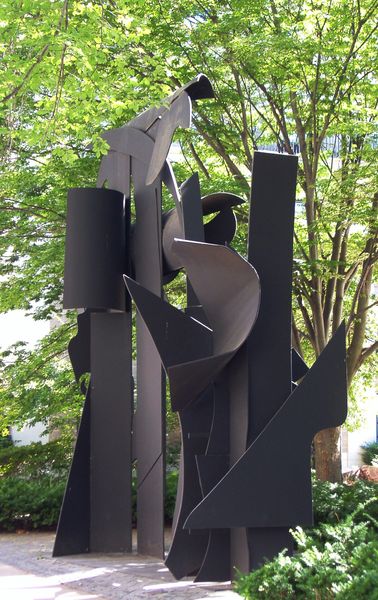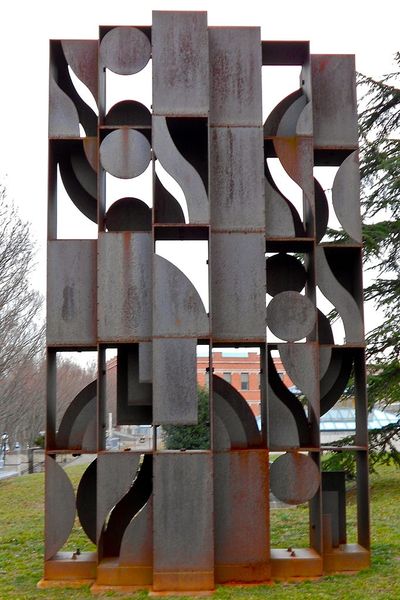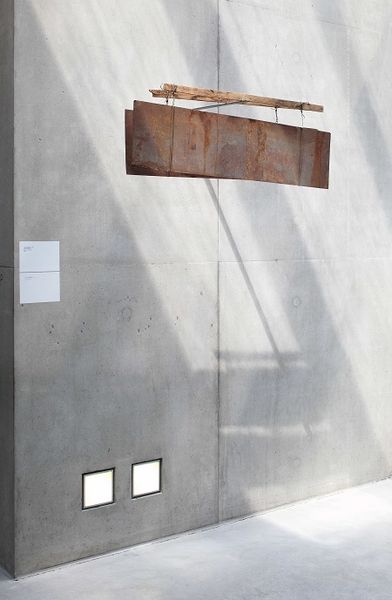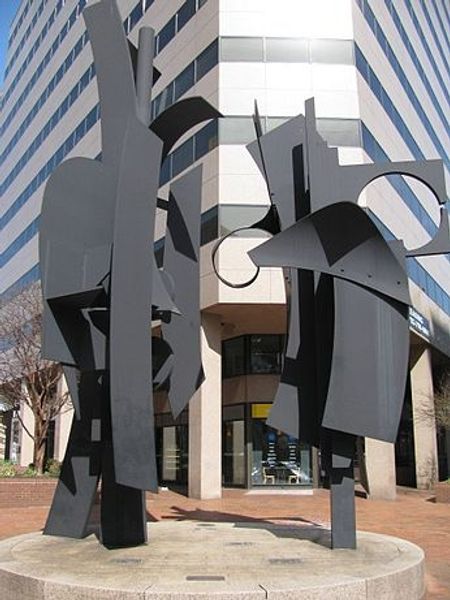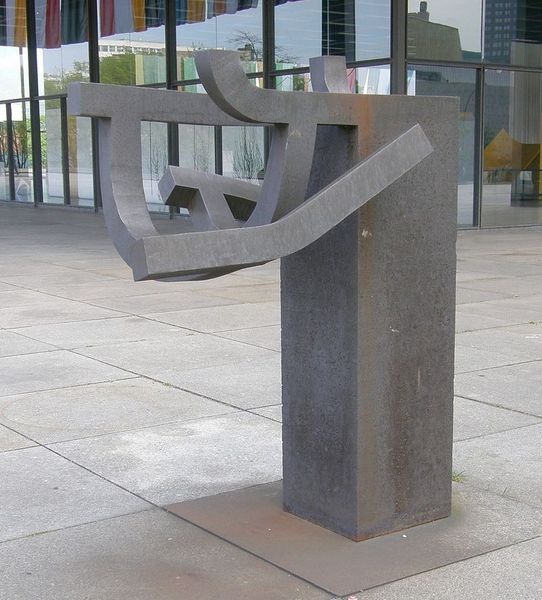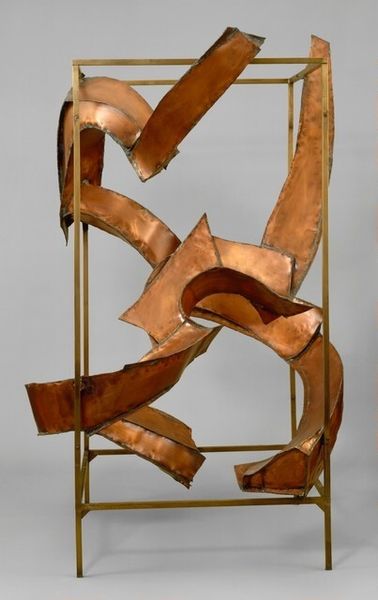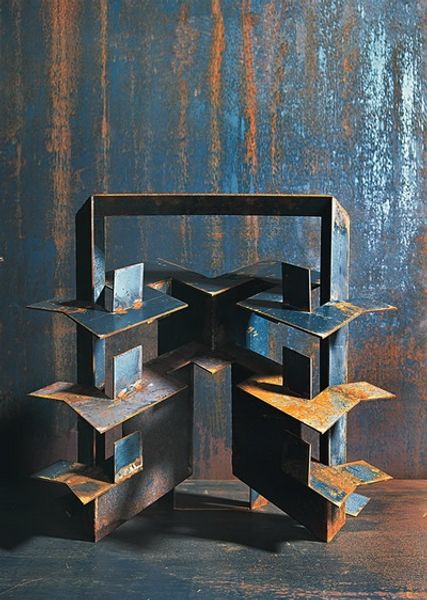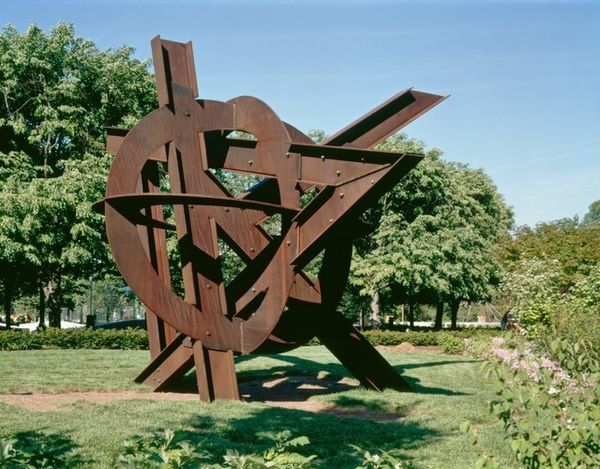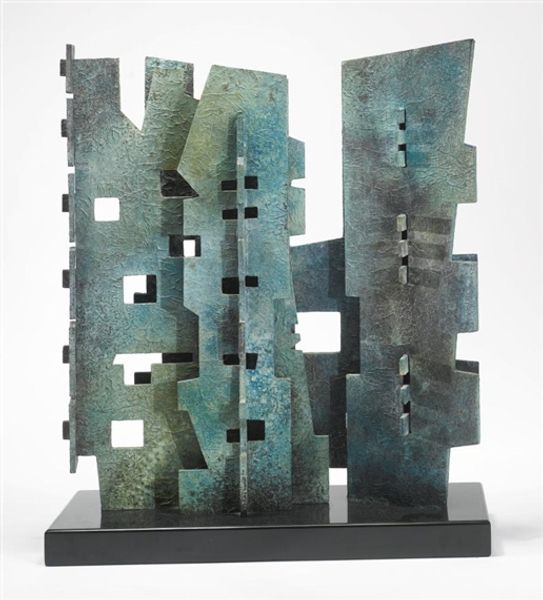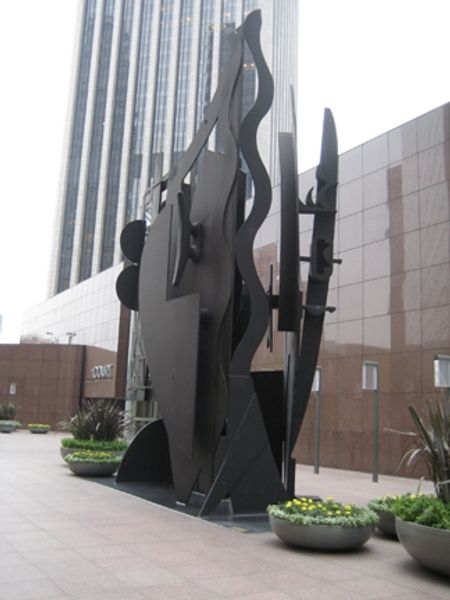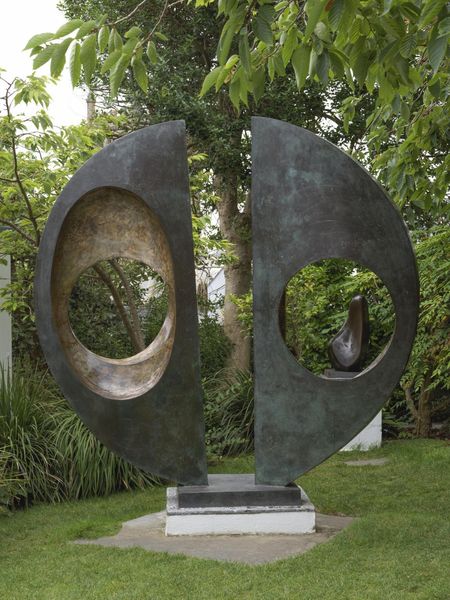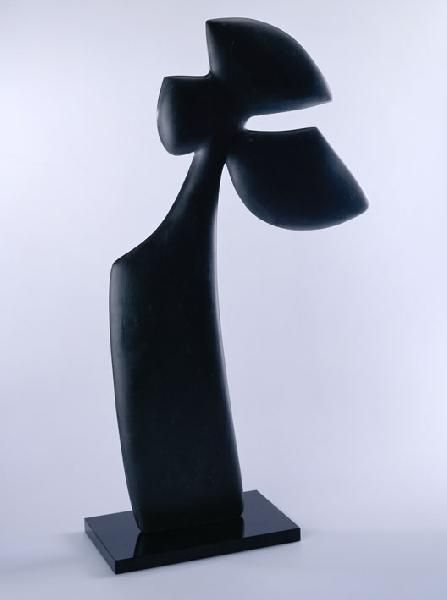
assemblage, metal, sculpture, installation-art
#
assemblage
#
metal
#
geometric
#
sculpture
#
installation-art
#
abstraction
#
modernism
Copyright: Louise Nevelson,Fair Use
Curator: Standing before us is Louise Nevelson's "Atmosphere and Environment XII," crafted in 1970, an impressive assemblage constructed from metal. What are your immediate thoughts? Editor: It strikes me as imposing yet open, almost like a skeletal facade of a forgotten industrial structure. The interplay of geometric shapes feels simultaneously rigid and fluid, creating a strangely compelling tension. Curator: It's crucial to understand Nevelson's artistic project in its time. She was deeply engaged with feminist perspectives. I find myself thinking about ideas of interiority versus exteriority and gender. Consider the "boxes" that Nevelson often filled—could that be seen as an interrogation of traditionally feminine-coded spaces and objects, transforming them into monumental, public works? Editor: I appreciate that interpretation. Historically, assemblage emerged partly as a reaction against the perceived elitism of high art. Think of the found objects and everyday materials incorporated by artists across the world; a way to democratize artistic practice. Is Nevelson’s work serving as a visual critique, challenging the traditional notions surrounding labor and societal status within the established artistic frameworks of her time? Curator: Precisely. The monochrome palette demands interrogation too; I mean, the unified color might encourage us to see the interconnectedness, pushing us to transcend boundaries of identity, class, gender—perhaps striving for universality despite, and through, specificity. But in thinking through Nevelson’s career trajectory, you have to note that earlier there was this overt claim of her interest in non-western art histories. That gets quiet over time... Editor: Absolutely. There’s something powerful about taking discarded or overlooked objects, imbuing them with artistic value. That speaks volumes about our society’s relationship with waste and repurposing, concepts very much a part of the artistic milieu then. Its monumental scale cannot be ignored. It commands its space and impacts public life through its presence. The arrangement has echoes of scaffolding. It seems to embrace and defy structural integrity all at once! Curator: This sculpture's openness to diverse interpretations mirrors the dynamism of our socio-political environment back then and even now. We see in the material's transformation not just aesthetic intent, but a commentary on labor, class, and artistic values. Editor: The metal breathes under Louise Nevelson’s skillful construction of parts.
Comments
No comments
Be the first to comment and join the conversation on the ultimate creative platform.
